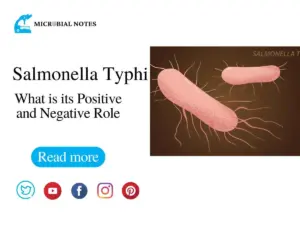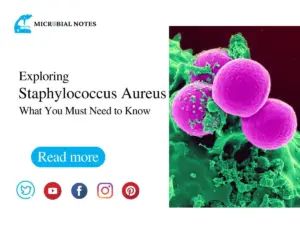Endospore staining history
In 1922, Dorner published a set of staining instructions. He discovered a method of differential labeling called endospore stain that makes vegetative cells seem pinkish-red and endospores appear green under the light microscope. Dorner’s method included using heat as a stage, but because it required a lot of time, Schaeffer and Fulton changed it in 1933.
Principle of endospore staining:
Some bacteria create bacterial endospores as a defense mechanism against unfavorable environmental factors. These entities are metabolically dormant and extremely resilient. Until the right conditions are present, the bacteria can stay in this suspended state where they can reactivate and go back to being inactive.
Fulton uses the Schaeffer method, which involves heating the bacterial emulsion to force the main stain, malachite green, into the spore. Vegetative cells may be decolored by water because malachite green is water soluble and has a poor affinity for the cellular matter. Any cells that have been decolored are subsequently counterstained with safranin. After staining, endospores will have a dark green color, and vegetative cells will be pink.
Spores can be found anywhere in a cell, including the end, middle, and middle-to-end regions. Additionally useful for diagnosis is spore morphology. Spores might be elliptical or round.
Endospore stain Reagents
Depending on the reagents employed, different types of endospore staining procedures exist;
1. Schaeffer Fulton Stain, which used safranin and the pigment malachite green
2. The Carbolfuchsin stain, acid alcohol, and nigrosin solution are used in the Dorner method of endospore staining.
Schaeffer Fulton endospore stain method
The Schaeffer-Fulton method of endospore staining is the simplest one to employ in basic laboratories since it makes it simple and quick to identify the bacteria. Malachite green dye, a water-soluble dye with an alkaline pH range of 11–12, combines steam heat to soften the endospore coating and allow dye penetration into the spore.
Applying steaming heat is crucial to enabling the dye to permeate the endospore because malachite green only weakly binds to the spore and easily washes away if rinsed with water without fixing. The decolorizing agent water is used to wash the malachite dye from vegetative forms. Last but not least, once the decolorizing agent has washed the malachite dye away, the underdeveloped vegetative forms of the Furmigates are stained with a counterstain called Safranin reagent, also known as the secondary stain (Water).
Safranin and malachite green dye are effective against bacteria because the bacteria’s cytoplasm is basophilic, attracting the positively charged, alkaline malachite green reagents. This attraction makes it simpler for the dye to be absorbed by the bacteria. The vegetative cell forms, which take up the counterstain, are visible when viewing the cells under a microscope as pinkish-red stains, while the endospores, which have taken up the Malachite green dye, are visible as green dotted particles (ellipses).
Reagents
- Malachite green dye (primary stain)
- Water (Decolorizer)
- Safranin ( counter stain)
Materials required?
- Glass Slide
- Inoculation loop
- Bunsen Burner
Smear preparation
- Alcohol should be used to clean the glass slide (white visible circles) of any stains.
- In each circle, add two tiny drops of water using a sterile inoculation loop.
- In an aseptic manner, flame the top of the tube containing the bacteria culture, remove a loopful of the culture, flame the tube once more, and seal it.
- In the water drop on the slide, smear the bacterial culture.
- When it is entirely dry, air dry.
- By passing the slide over the blue flame with the smear side up, heat-fix it. 3-4 times NB: Don’t ignite the bacteria-containing side.
- Allow cooling before beginning to stain.
Endospore stain procedure
- With a piece of absorbent paper, cover the streaks.
- Place the slide over a staining rack that is equipped with a steaming beaker or water bath.
- Fill the absorbent lately with malachite green, then steam it for three to five minutes.
- Carefully remove the discolored absorbent paper, toss it in the trash, and give it a couple of minutes to cool.
- By tilting the slide so that the water may run spreading the spreading stain, gently rinse the slide. This is done to eliminate any addition to the slide’s two sides and any extra dye that has stained any vegetative forms in the heat-fixed smear.
- For one minute, add the counterstain, safranin.
- To get rid of the safranin reagent, thoroughly rinse the slide with water on both sides.
- Before placing the slide on the microscope stage to be viewed with the oil immersion lens at 1000x for maximum magnification, make sure the bottom of the slide is dry.
Endospore stain result
The endospores will stain green from the malachite green dye, whereas the vegetative forms will absorb the pink/red stain from safranin.
Dorner Method for staining:
Reagents
- Carbolfuchsin stain,
- Decolorizing solvent (acid-alcohol)
- Counterstain (Nigrosin solution)
Endospore Procedure:
- Put some absorbent paper over the stain.
- Carbol-fuschin should be applied heavily, and after 5–10 minutes of steaming over a pot of boiling water or a beaker, the material should be heated to fix it.
- Remove the absorbent paper and use acid-alcohol to decolorize it for 1 minute. Rinse with tap water, then tap dry.
- Add a thin layer of the counterstaining substance nigrosin.
- Check the slide for endospores by magnifying it 1,000 times with the oil immersion lens.
Results
Endospores are red, while vegetative cells are colorless.
Endospore stain applications
- For the detection of bacteria belonging to the firmicute group, such as Bacillus spp. and Clostridium spp.
- To distinguish between bacteria that produce spores and those that are vegetative by identifying the endospore-producing bacteria in samples.
Advantages and disadvantages of endospore staining?
Advantages:
- Because it is a differential stain, you can recognize particular bacteria that produce endospores.
- In addition to indicating the existence of bacteria that produce endospores, it also permits the detection and presence of vegetative forms in bacterial cultures.
Disadvantages:
It can only detect the presence of endospore-forming bacteria specifically.
References:
https://microbiologie-clinique.com/endospore-staining-malachite-green.html
https://microbiologyinfo.com/endospore-staining-principle-reagents-procedure-and-result/







